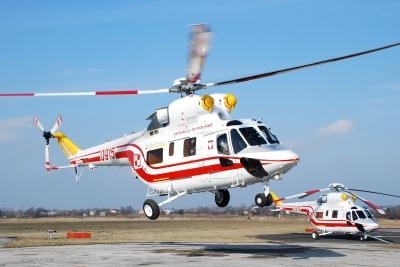Mon, May 03, 2021
AD 2021-08-16 Requires Repetitive Inspections Of A Certain Part-Numbered Stainless Steel Cable
The FAA is adopting a new airworthiness directive (AD) for PZL Swidnik S.A. (PZL) Model W-3A helicopters.

This AD requires repetitive inspections of a certain part-numbered stainless steel cable (cable) installed on a certain part-numbered hoist assembly, and depending on those inspection results, removing certain parts from service and reporting the results. This AD also prohibits installing the affected part unless it is inspected per the AD requirements. This AD was prompted by wear of and damage to the cable near the swaged terminal due to movement of the hook assembly. The actions of this AD are intended to address an unsafe condition on these products. This AD becomes effective May 11, 2021.
Supplementary Information: EASA, which is the Technical Agent for the Member States of the European Union, has issued EASA AD 2020-0017, dated January 30, 2020, to correct an unsafe condition for all serial-numbered Wytwórnia Sprzêtu Komunikacyjnego (WSK) “PZL-Œwidnik” Spólka Akcyjna (S.A.) Model PZL W-3A helicopters with a Collins Aerospace (formerly Goodrich) electric hoist assembly (hoist) part number (P/N) 76378-500 having stainless steel cable P/N 712952 installed. EASA advises that occurrences were reported of cables found worn out; the damage consisted of reduction of the cable diameter near the swaged terminal. EASA states that subsequent investigation identified that the extensive cable wear was possibly caused by flickering movement of the hook assembly in the stowage position during flights. EASA further states that this condition, if not detected and corrected, could lead to reduction of the cable strength, possibly resulting in an in-flight loss of
the hoist load, injury to persons, or damage to and reduced control of the helicopter.
Accordingly, EASA AD 2020-0017 requires repetitive inspections of the cable to detect cable condition and diameter restriction and based on those inspection results, either replacing parts or additional maintenance actions and reporting non-compliant inspection results to Collins Aerospace. For helicopters that do not have the affected hoist installed, EASA AD 2020-0017 allows installing an affected hoist provided that it is new (never previously installed), overhauled (never installed after overhaul), or has passed an inspection (no defect found, or defects corrected), less than 25 flight hours before installation, in accordance with the instructions of the service information.
More News
He Attempted To Restart The Engine Three Times. On The Third Restart Attempt, He Noticed That Flames Were Coming Out From The Right Wing Near The Fuel Cap Analysis: The pilot repor>[...]
Make Sure You NEVER Miss A New Story From Aero-News Network Do you ever feel like you never see posts from a certain person or page on Facebook or Instagram? Here’s how you c>[...]
From 2009 (YouTube Edition): Leading Air Show Performers Give Their Best Advice for Newcomers On December 6th through December 9th, the Paris Las Vegas Hotel hosted over 1,500 air >[...]
Aero Linx: NASA ASRS ASRS captures confidential reports, analyzes the resulting aviation safety data, and disseminates vital information to the aviation community. The ASRS is an i>[...]
“For our inaugural Pylon Racing Seminar in Roswell, we were thrilled to certify 60 pilots across our six closed-course pylon race classes. Not only did this year’s PRS >[...]
 NTSB Final Report: Rutan Long-EZ
NTSB Final Report: Rutan Long-EZ ANN FAQ: Turn On Post Notifications
ANN FAQ: Turn On Post Notifications Classic Aero-TV: ICAS Perspectives - Advice for New Air Show Performers
Classic Aero-TV: ICAS Perspectives - Advice for New Air Show Performers ANN's Daily Aero-Linx (06.28.25)
ANN's Daily Aero-Linx (06.28.25) Aero-News: Quote of the Day (06.28.25)
Aero-News: Quote of the Day (06.28.25)



